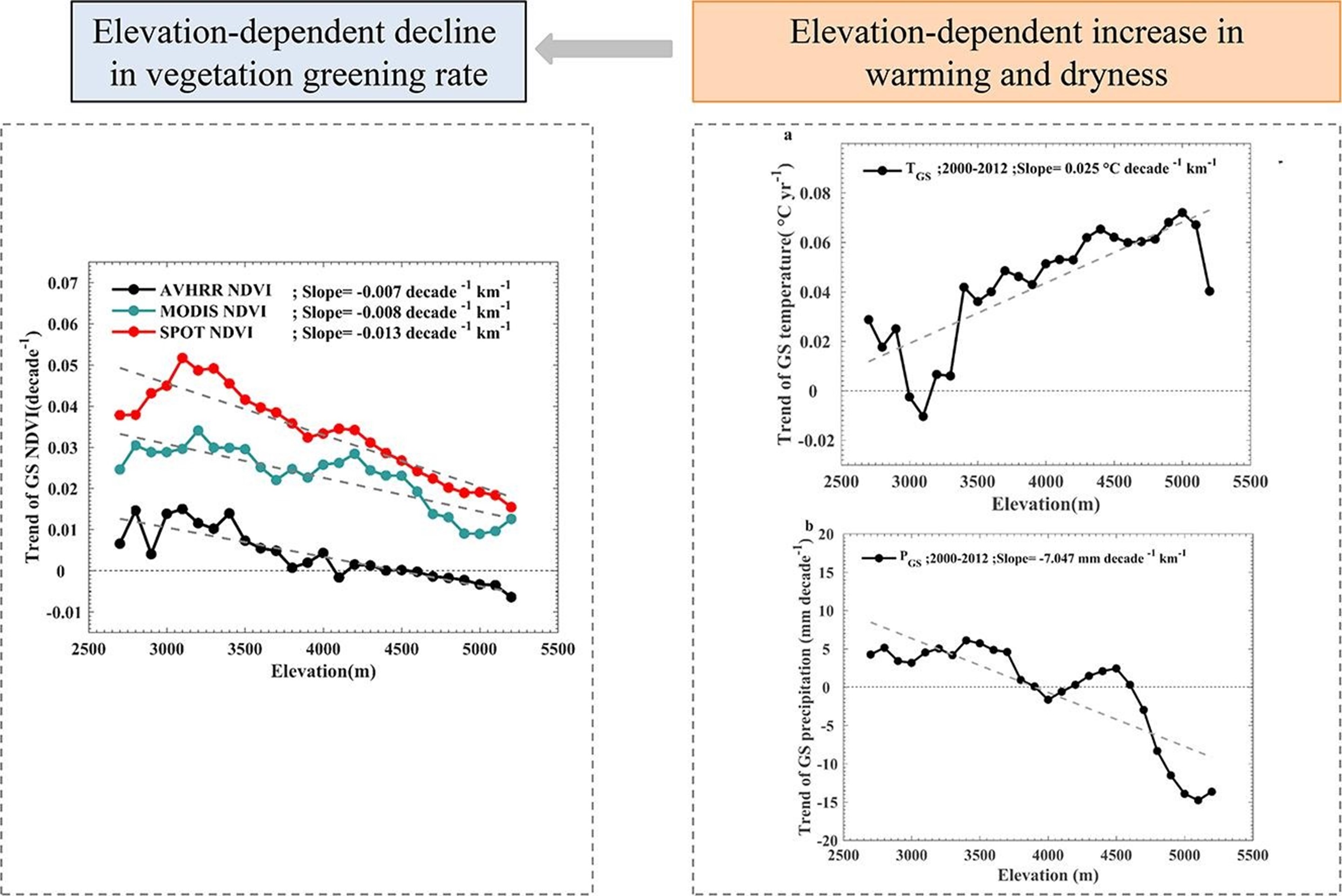
ABSTRACT
In northern high-latitude regions, amplified vegetation greening has been observed due to a larger warming rate than the rate at low latitudes. Similarly, on the Tibetan Plateau (TP), the warming rate is larger at high elevation than that at low elevation. Our results show that large discrepancies exist in the trends in the satellite-derived Normalized Difference Vegetation Index (NDVI) during 2000–2012, indicating the importance of using three satellite-derived NDVI datasets (Global Inventory Modeling and Mapping Studies, Moderate Resolution Imaging Spectroradiometer and SPOT) in the evaluation of vegetation activity on the TP. Based on three NDVI datasets, during 2000–2012, rising temperature drove the regional vegetation greening across the TP, but the vegetation greening rate contrasted with that of elevation-dependent warming. Here, with simultaneous use of climate observation data, we found that declining water availability with rising elevation may restrict and offset the positive effect of rising temperature on vegetation greening, resulting in the declining rate of vegetation greening as elevation increases on the TP. Our results highlight the significant influence of precipitation on elevation-dependent changes in vegetation activity in rapidly warming mountain ecosystems.
KEYWORDS
Elevation-dependent warming; NDVI; Precipitation; Tibetan Plateau
JCR CLASSIFICATION
Q1
Ecological Indicators
https://doi.org/10.1016/j.ecolind.2019.105569
